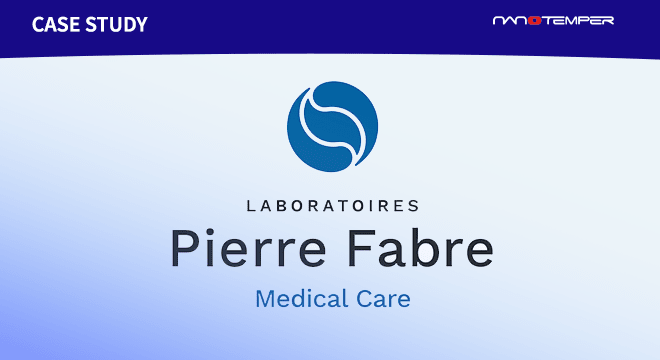
By 2014, NanoTemper had won a slew of awards for the Monolith. Labs throughout Europe were using MST to measure their biological interactions, and the technology was starting to catch on elsewhere, especially in the United States. Philipp and Stefan wanted to create sturdy, reliable instruments that were easy-to-use. Part of establishing a new technology in the field was ensuring that users were reliably trained and always had an expert to turn to for help. From its earliest days, NanoTemper had a dedication to support and service. They personally traveled around the continent visiting researchers to help them get the most out of their instruments.
Innovation in unexpected places
It is that dedication to service that unexpectedly led to the next chapter in the NanoTemper story. One of our early customers was using a Label-Free Monolith to solve a completely different problem in their lab. This customer wanted to better understand the stability of their protein and hoped that the Label-Free optics in the Monolith might give them the ability to do that. However, when our founders learned about this challenge the customer was facing, they wondered if they could develop a new technology dedicated to answering these very questions.
“Our user was trying to do chemical stability studies in the Label-Free Monolith, but it wasn’t
built for that purpose. We asked if we could make an instrument designed for customers like this.” -Philipp Baaske
Thus began the development of the Prometheus. Talking to this customer and other protein researchers helped pinpoint what was needed in a protein characterization instrument—precise data, easy-to-interpret data, and label-free technology to free users from buffer constraints. Traditional differential scanning fluorescence (DSF) methods were dye-based and often suffered issues with data resolution, especially at higher temperatures. As the Prometheus was developed, it was carefully and thoughtfully designed to avoid these drawbacks and give high data density even up to 110°C or with low concentration samples. Hence the technology was dubbed nanoDSF, to emphasize its ability to use DSF to measure even the smallest changes in protein structure.
Naming a new technology

In keeping with the Arthur C. Clarke traditions established with the Monolith, “Prometheus” was the name of the first spacecraft in Clarke’s 1948 “Prelude to Space.” A perhaps more familiar reference is Prometheus as the Greek god who gave fire to man. The gift of fire illuminated and allowed humankind to leap forward to make new discoveries and create new technologies. The Prometheus was colored red to represent its potential as the “fire” that launches new discoveries in the lab.
In its short history, the Prometheus has become the gold standard in protein characterization. Researchers around the world rely on the precise data obtained from this instrument. The story of the Prometheus shows the importance of listening to your users and finding out what solutions they really need in the lab. Of course, this instrument would not exist without the product developers, software engineers, or production managers that helped build it. But it would also not exist without one guy in a lab trying to adapt an unrelated technology to solve a different problem he faced. The power of scientists’ ingenuity is built into the very history of the Prometheus.




















